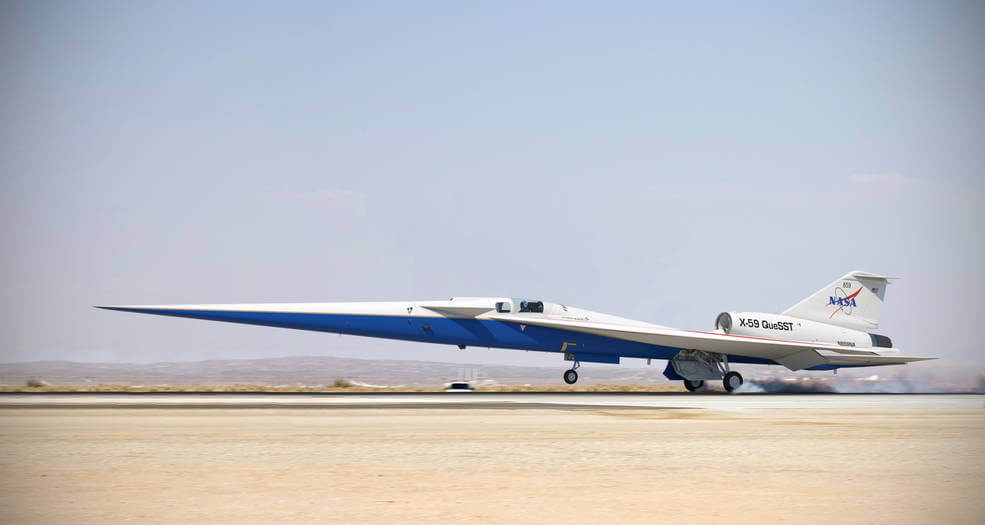The Lockheed Martin X-59 QueSST (Quet Supersonic Transport) developed for NASA’s Low-Boom Flight Demonstrator program is soon to take off into the atmosphere.
The experimental supersonic aircraft has been built with an aim to find a solution to one of the most enduring challenges of supersonic flight – the sonic boom. The design features of X-59 QueSST reducing sonic booms are known now, however the main question is whether the aircraft is capable of retaining its unique shape, that reduces the boom, while in the air. According to Craig Nickol, manager of NASA’s Low-Boom Flight Demonstrator project, there are a lot of variables that are difficult to model when the real aircraft gets into the real atmosphere.
What also needs to be clarified is how the jet’s sound will move through the atmosphere and how people will view the softer sonic noise.
The flight testing is expected to begin in 2021, which should clear up the uncertainties and answer all the arising questions. The data received during the testing will be provided to the regulators, who will use the information to build an acceptable commercial supersonic noise standard in order to lift the ban set on commercial supersonic travel over land.
Should this mission be successful, it will likely lead to a renaissance in the industry. The new global market would be opened and the travel time for passengers would take half the time it currently takes, which is a major milestone.

